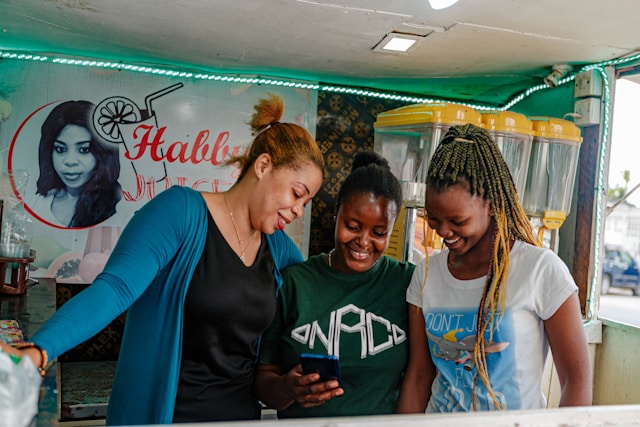
According to the new GSMA Mobile Economy Report, published by the global association for mobile operators, in 2024, sub-Saharan Africa witnessed the mobile Internet gender gap shrinking for the second year running, from 36% in 2022 to 29%. Such developments show positive momentum, although one must recognize that it is still a steep challenge, as approximately 205 million women in the region still do not use mobile Internet.
This, despite mobile coverage spreading across the continent, thus making sub-Saharan Africa the region with the highest female offline population.
Barriers Go Beyond Connectivity
The Mobile Gender Gap Report 2024, by the GSMA, states that the major factors hindering and restricting mobile internet access are affordability, mainly of smartphones, for both men and women. However, women face additional barriers related to income, education, and gender norms.
Because of structural inequalities based on income and education, the barriers affect women disproportionately,” said Claire Sibthorpe, Head of Digital Inclusion at GSM, “Social norms still restrict women from freely accessing digital tools.”
According to the report, in contrast, the gender gap existing in South Asia is more tied to poor digital literacy and skills.
The Economic and Social Stakes
According to the GSMA, closing the gender gap in mobile ownership and usage in low- and middle-income countries from 2023 to 2030 would generate $1.3 trillion of additional GDP.
Digital access is considered a core metric for gender equality by the United Nations Sustainable Development Goals. Oxford University researchers have found that women who own mobile phones and go online are empowered in subjects ranging from health decision-making to financial independence.
In the absence of mobile internet, women could be increasingly excluded from opportunities in education, work, healthcare, and civic participation.
Case Study: Lessons from Pakistan
Interestingly, Pakistan saw the largest reduction of the gender gap in 2024. GSMA revealed family disapproval is the second most-cited barrier preventing women from using mobile internet, which men never acknowledged. This, therefore, reiterates the limitations permeating social restrictions and household control on the digital freedom of women.
Such dynamics are at play in many African communities, indicating that interventions must tackle deep-rooted gender norms in conjunction with technical and economic barriers.
The Path Forward
Though the gender mobile Internet gap is declining, there are still some 200-plus million African women who are disconnected. GSMA therefore calls for targeted efforts by the governments, private sector, and development organizations to make the mobile Internet more accessible and inclusive for women.
“Women comprise half the population; thus, this really is a question that must concern economies, governments, but businesses, also, for reducing this inequality in their customer-base,” said Sibthorpe.
And so, what needs to be done now is to go beyond coverage maps and pricing models, to education, to local language content, training in digital skills, and to the social norms governing women’s access to technology.
Key Takeaways
- In 2024, sub-Saharan Africa is still grappling with a typical mobile internet gender gap of 29%.
- With all progress considered, 205 million women still remain offline in the region.
- Issues facing these potential women users include the affordability of smartphones, education, and social and cultural norms.
- Closing the gender gap can create $1.3 trillion worth of GDP in developing economies.
- Following the progress seen in Pakistan, it is clear that social norms have to be addressed and not just infrastructure.
Follow us on WhatsApp, Telegram, Twitter, and Facebook, or subscribe to our weekly newsletter to ensure you don’t miss out on any future updates. Send tips to editorial@techtrendsmedia.co.ke



